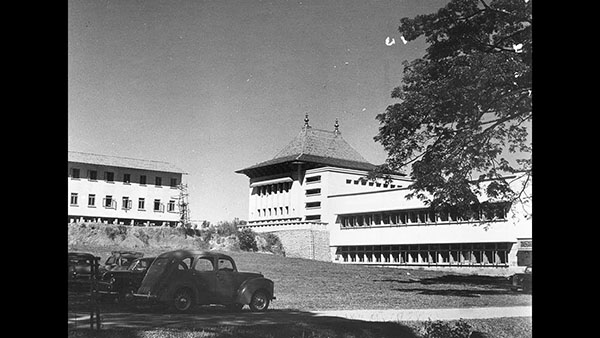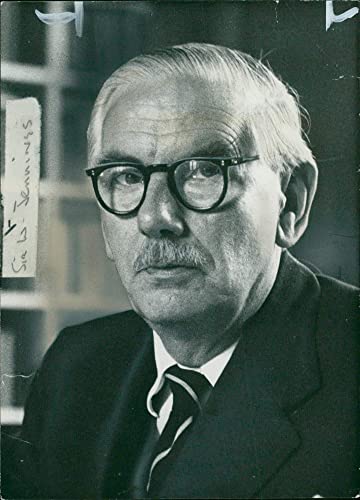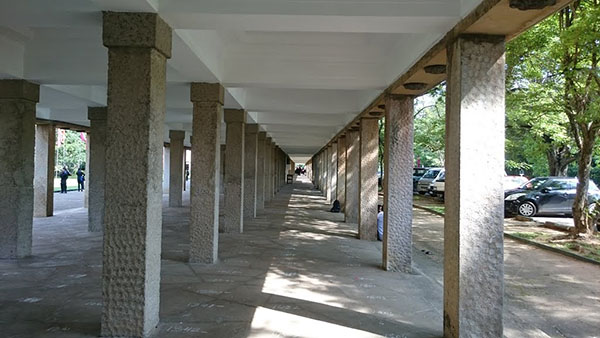A brief History on the Inception of University of Peradeniya

Source:Perabeats
Raised in between lush green banks of Mahaweli River and misty Hanthana mountain range, the scenic beauty of University of Peradeniya is one of its kind. Rightly did its forefather, Sir Ivor Jennings on his first visit to the proposed site of future university proclaimed that “no university in the world could have such a setting”. Today, Peradeniya stands heir to a 75 year old university tradition and is ranked as one of the top universities in Sri Lanka and worldwide. However its journey since its inception in 1942 as the “University of Ceylon” to the Educational giant it is today has being a result of persistent dedication and commitment of its founding fathers: a group of both foreign and local intellects at the time. Looking back at the History of University of Peradeniya it can be divided into four important stages:
1942-1952 as University of Ceylon
1952-1972 as University of Ceylon, Peradeniya.
1972-1978 as Peradeniya Campus, University of Sri Lanka
since 1978 as University of Peradeniya
Establishment of University of Ceylon in Colombo in 1942 marked a hallmark in higher education sector in Sri Lanka. Sir Ivor Jennings who was appointed as the 2nd principle of the institution was vested with the most important yet the hard task of shifting the University College to an extended residential campus. The proposed site for this expansion was none other than 700 hectares of Mahaweli Plain in Peradeniya. The project which till then was lagging behind due to lack of proper initiation and leadership was soon set into motion on a grand scale under the ingenious of Sir Ivor Jennings.

The designing and layout of the University complex was carried out by the consultation of the Sir Patrick Abercrombie and Clifford Holliday. The plan was executed by the Sri Lankan architect Shirley De Alwis. The first phase of construction started with the left bank, which was building a bridge across the Mahaweli river, later named as the “Akbar Bridge”. A remarkable feature of the architecture of the university was that it combined the ancient architectural traditions of the country into the university buildings. For an example the senate house raised on the stone pillars is an replica of the “Lovapamapaya” structure build during of the Anuradhapura era.

In 1941, the construction process was disturbed due to the beginning of the 2nd world war but immediately resumed. By 1949, the first batch of students were transferred from Colombo to Peradeniya, that included students from the Departments of Law and Agriculture and third year and fourth year students from the Department of Veterinary Sciences.
By the year 1952, Peradeniya was able to facilitate nearly 1000 residential students. The student hostels were named after the influential figures who committed to uplift university education in Ceylon. They include Sir Ponnambalam Ramanadan, Sir Ponnambalam Arunachalam, Sir D.B jayathilake, Professor Robert Mars and Sir James Peiris.
In 1952, the transfer of staff of Arts and Oriental studies took place along with the main library and University Administration marked another important move. With that On October 7th 1952 at 8 am University of Peradeniya officially opened commenced its academics with 827 students. The main library was opened at 9 am the same morning on the ground floor the Faculty of Arts building. The convocation for the first batch of graduates took place November 21st 1952. The postponed official opening of the university took place in presence of Queen Elizabeth on April 20th 1954.


By 1954, the Faculty of Dental Sciences, by 1961 the Science faculty, medical Faculty in 1962 and Engineering Faculty in 1964 were added to the university premises. The First Vice chancellor, Sir Ivor Jennings who did an invaluable service for the development of the university resigned from his post in 1955. His successor was Sir Nicolas Atigala.
By present, University of Peradeniya has evolved into an educational giant comprising of 9 faculties, 3 postgraduate institutions, 10 centers, 73 departments with distant education programs, an extensive library network, sports and recreational and residential facilities. It teaches around 11,000 students in a year in the fields of Medicine, Agriculture, Art, Science, Engineering, Dental Sciences, Veterinary Medicine and Animal Science, management and Allied Health Science. It is declared to have the largest government endowment by a higher education institute in Sri Lanka and has consecutively won number one among University rankings of the country.
Article by- Monisha Mahanthamulla.







